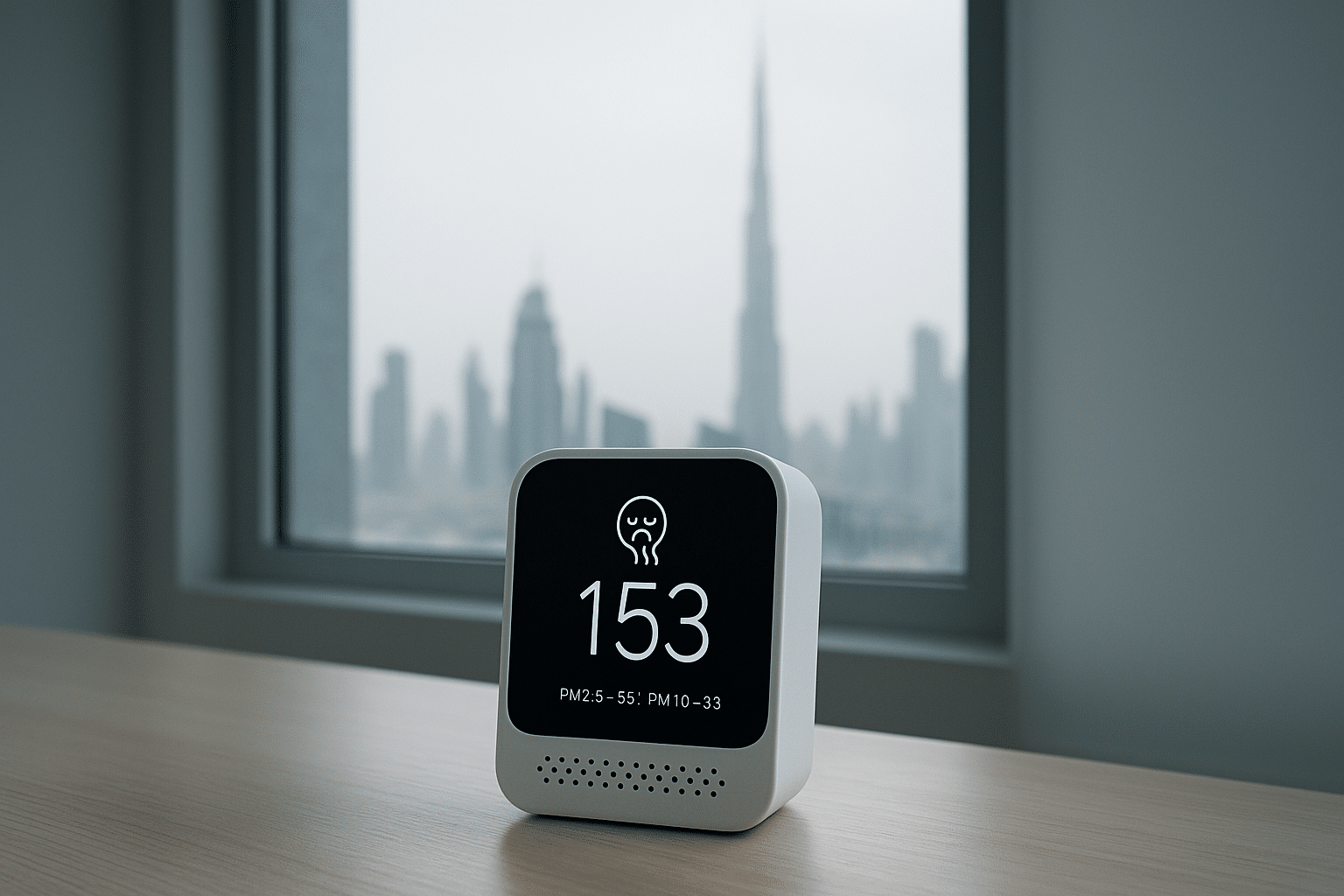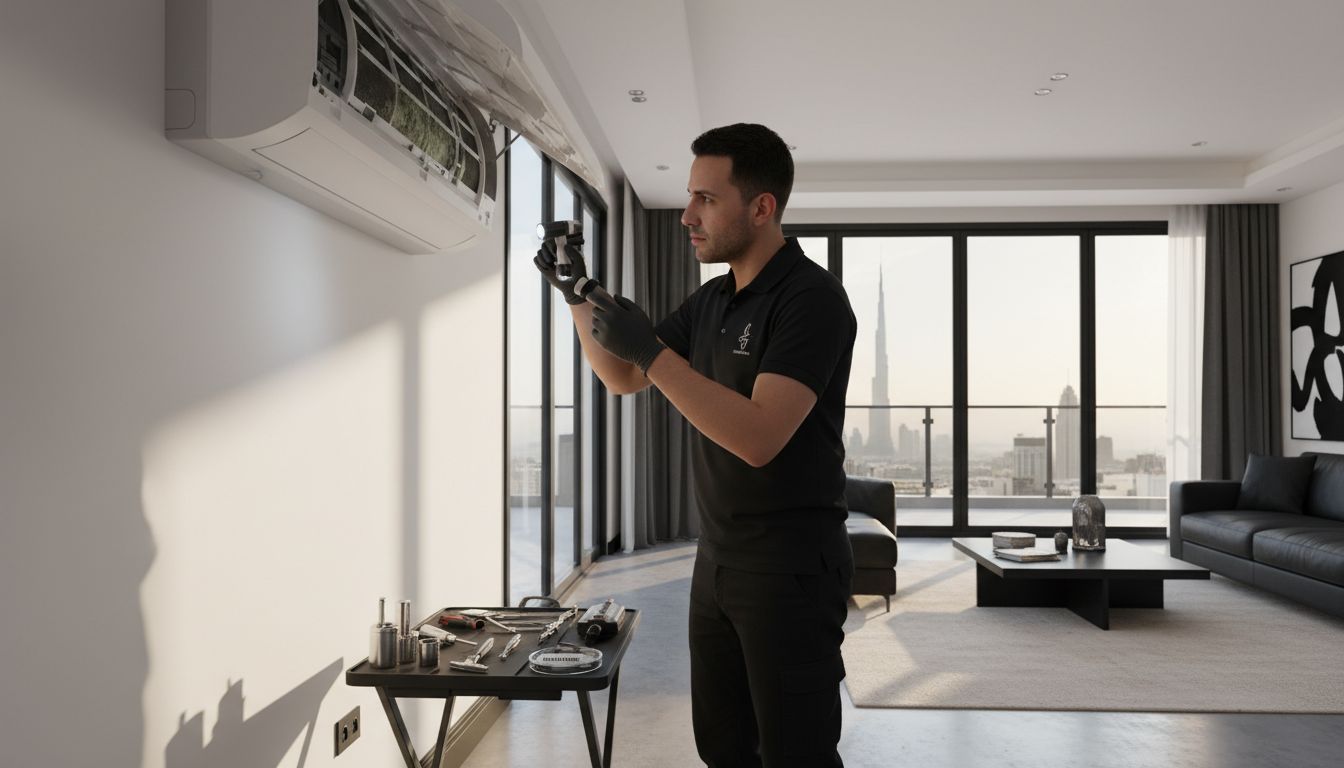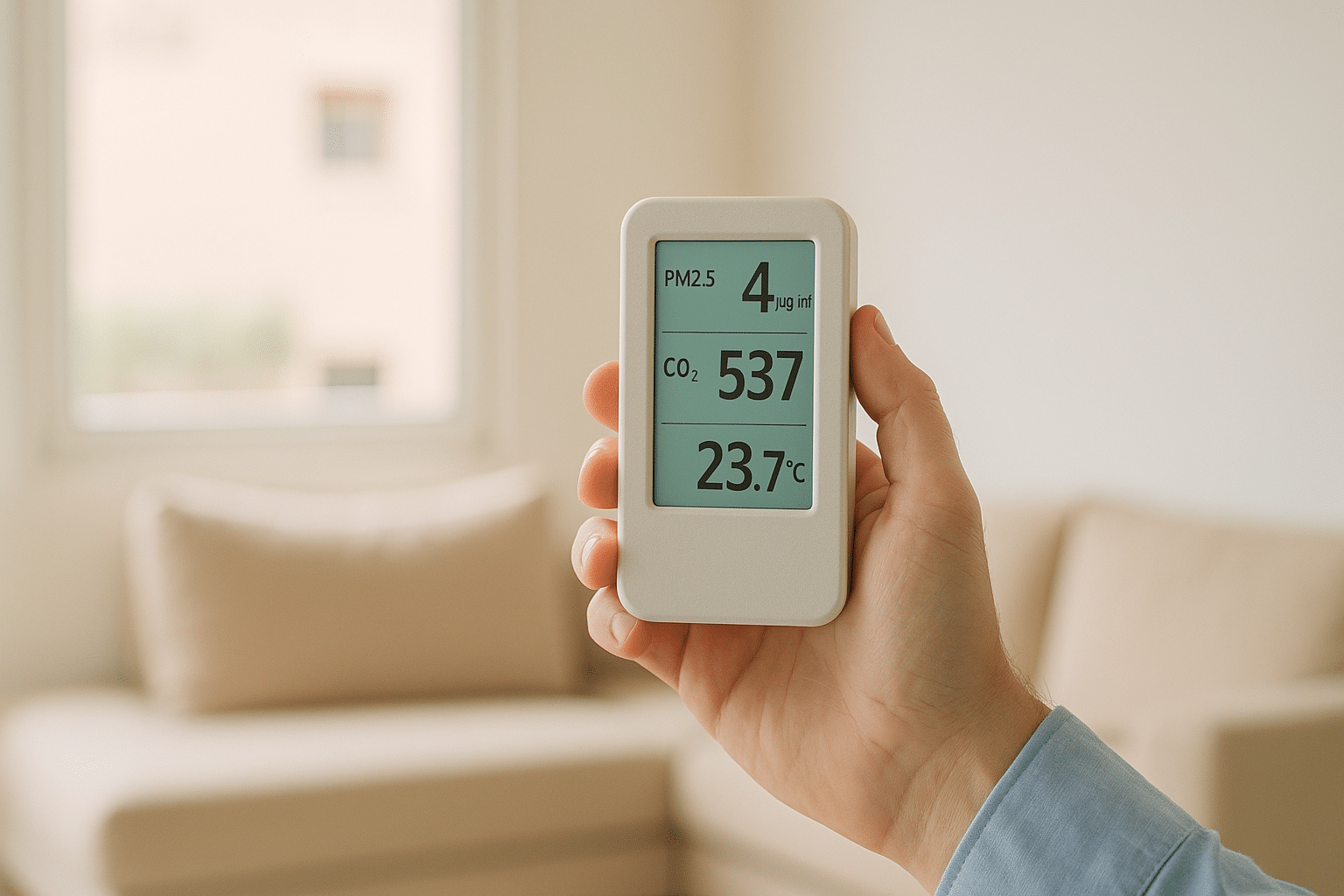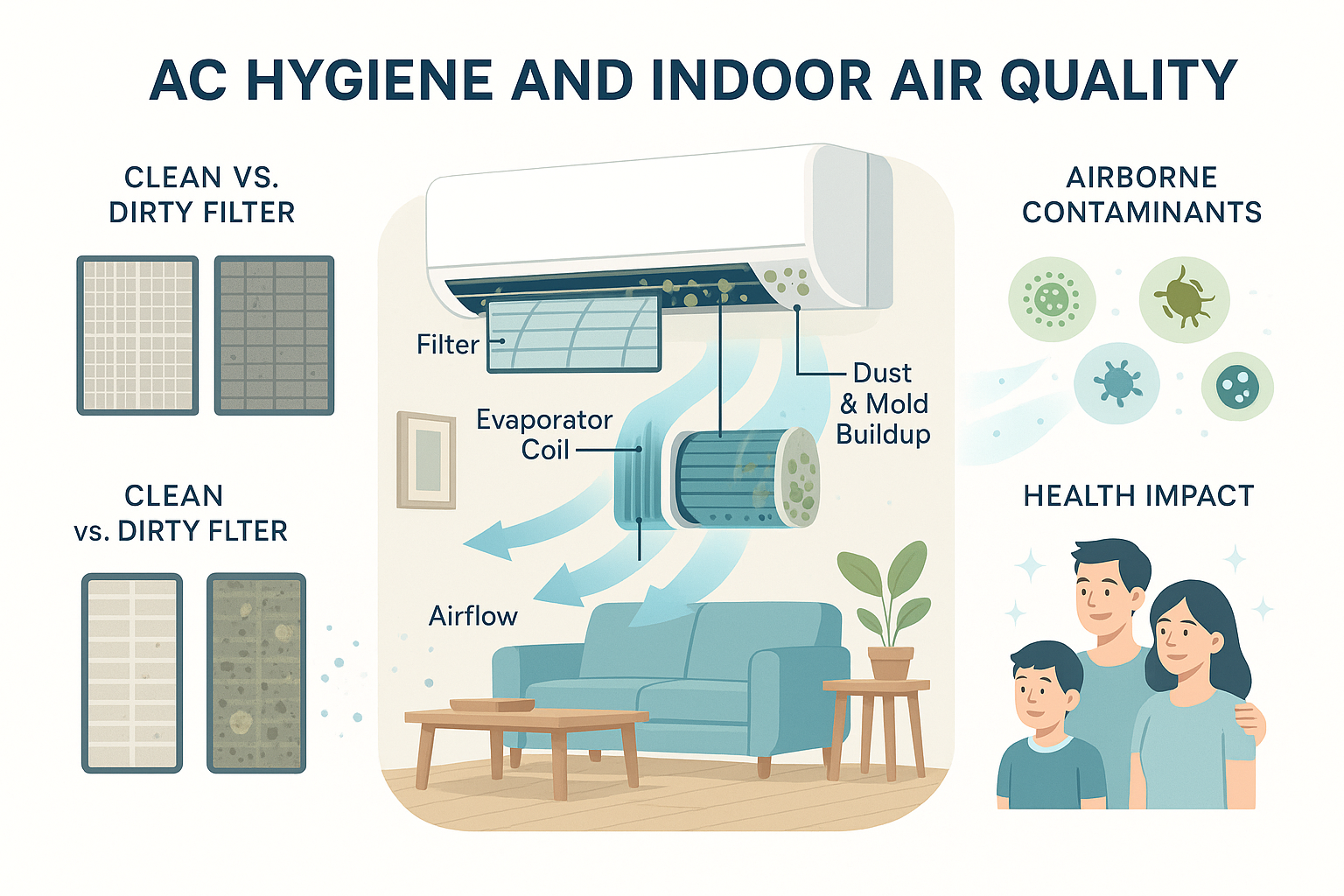
5 Critical Insights on Indoor Air Pollutant Risks Dubai and How to Mitigate Them with Professional AC Duct Cleaning
Table of Contents
Contents
- 1 Table of Contents
- 2 Understanding Indoor Air Pollutant Risks Dubai
- 3 Sources of Indoor Air Pollutants in Dubai Homes
- 4 Health Effects Associated with Indoor Air Pollutant Risks Dubai
- 5 Professional AC Duct Cleaning as a Solution
- 6 How to Choose the Right AC Duct Cleaning Service in Dubai
- 7 Practical Steps to Maintain Indoor Air Quality
- 8 Conclusion & CTA
- 9 Understanding Indoor Air Pollutant Risks in Dubai
Understanding Indoor Air Pollutant Risks Dubai
The topic of indoor air pollutant risks dubai is gaining essential attention as urban lifestyles increasingly trap contaminants indoors. In Dubai’s warm climate, reliance on air conditioning systems means that indoor air quality can have profound effects on residents’ health and comfort. Identifying and addressing these risks is pivotal for a healthy living and working environment throughout Dubai’s diverse localities such as Downtown Dubai, Business Bay, and Dubai Marina.
Indoor air pollutants are harmful substances that compromise the air inside buildings. They originate from various indoor and outdoor sources but are especially intensified in the arid desert climate of Dubai, where door and window openings are limited and ventilation depends heavily on HVAC systems. Recognizing these indoor air pollutant risks dubai is the first step toward effective mitigation.
Sources of Indoor Air Pollutants in Dubai Homes
Indoor air pollutant risks dubai mainly arise from these sources:
- HVAC Systems and AC Ducts: Air conditioning ducts can accumulate dust, mould spores, bacteria, and allergens if not cleaned regularly, contributing significantly to indoor pollution.
- Building Materials and Furnishings: VOCs (Volatile Organic Compounds) arise from paints, adhesives, carpets, and synthetic furnishings commonly used in Dubai’s modern interiors.
- Household Activities: Cleaning agents, cooking fumes, tobacco smoke, and scented products emit pollutants trapped indoors due to limited ventilation.
- Outdoor Air Pollution: Dubai’s busy roads and construction sites contribute dust and particulate matter that infiltrate buildings and settle inside.
Understanding these sources helps in designing effective interventions tailored to Dubai’s unique living conditions and climate, thereby significantly reducing indoor air pollutant risks dubai.
Health Effects Associated with Indoor Air Pollutant Risks Dubai
The impact of indoor air pollutant risks dubai extends into several critical health areas, especially for residents of dense urban Dubai neighborhoods:
- Respiratory Problems: Exposure to dust, mould, and allergens can trigger asthma, bronchitis, and other chronic respiratory diseases exacerbated by Dubai’s dust storms.
- Allergic Reactions: Pollutants like pet dander and pollens can cause sneezing, watery eyes, and skin irritations.
- Long-term Health Risks: Prolonged exposure to VOCs found in paints and furnishings might increase risks of neurological issues and cancer.
- General Discomfort: Poor air quality reduces productivity, causes headaches, fatigue, and impacts overall wellbeing.
The Dubai Municipality and Dubai Health Authority emphasize minimizing indoor pollution to safeguard public health and comply with local health and safety standards. Addressing these indoor air pollutant risks dubai is paramount for resident well-being.
Professional AC Duct Cleaning as a Solution
Given that air conditioning is indispensable in Dubai’s climate, professional AC duct cleaning stands as a smart and actionable step to reduce indoor air pollutant risks dubai. Duct cleaning removes accumulated dust, mould, and microbial life that otherwise recirculate contaminants indoors.
Professional cleaning improves the efficiency of your HVAC system, reduces energy consumption, extends system life, and crucially, enhances air purity—a critical factor in addressing indoor pollution challenges in Dubai’s humid summers and dusty seasons.
Organizations like the National Air Duct Cleaners Association NADCA, which sets standards for mitigating indoor air pollutant risks in Dubai, provide globally recognized standards for duct cleaning services, while Dubai-based providers tailor their methods to comply with local environmental and health regulations. These practices are crucial for managing indoor air pollutant risks dubai effectively.
How to Choose the Right AC Duct Cleaning Service in Dubai
Selecting a professional service is vital to effectively mitigate indoor air pollutant risks dubai. Dubai residents seeking duct cleaning services should consider the following criteria:
- Certification and Standards Compliance: Look for companies adhering to NADCA standards and recognized by Dubai Municipality and Dubai Health & Safety authorities.
- Experience and Specialization: Choose services with proven expertise specifically within Dubai’s climate and building types.
- Equipment and Techniques: Modern cleaning technology that prevents cross-contamination and guarantees thorough removal of contaminants is critical.
- Customer Reviews and Guarantees: Positive feedback from Dubai locality customers and service guarantees enhance trustworthiness.
A reputable Dubai-only provider such as Saniservice specializes in professional AC duct cleaning tailored to Dubai’s specific indoor air quality challenges, offering reliable and effective solutions.
Practical Steps to Maintain Indoor Air Quality
Beyond professional duct cleaning, residents can take practical steps to further reduce indoor air pollutant risks dubai in their homes and offices, contributing to a healthier environment:
- Regular Ventilation: When possible, open windows and doors during less dusty parts of the day to allow fresh air circulation, especially in areas like Dubai Marina or Arabian Ranches where outdoor air quality is typically better.
- Use of Air Purifiers: Deploy HEPA filters and air purifiers to capture fine particulates and allergens from indoor air.
- Humidity Control: Maintain indoor humidity at optimal levels to prevent mould growth, which can exacerbate respiratory problems.
- Eco-friendly Materials: Choose low-VOC paints, adhesives, and furnishings approved by UAE regulatory bodies to minimize chemical emissions.
- Routine Cleaning: Regular dusting with microfiber cloths and vacuuming helps reduce allergens settled on surfaces.
| Pollutant Source | Common Contaminants | Preventive Actions |
|---|---|---|
| AC Ducts | Dust, Mould, Allergens | Professional duct cleaning every 6-12 months |
| Building Materials | VOCs, Formaldehyde | Use UAE-approved low-VOC materials |
| Household Activities | Smoke, Cleaning Chemicals | Use natural products, ventilate during use |
| Outdoor Air Infiltration | Dust, Particulates | Seal openings, use air purifiers |
Conclusion & CTA
Indoor air pollutant risks dubai represent a significant, yet manageable, threat to health and comfort in Dubai’s unique built environments. By understanding pollutant sources, recognizing health impacts, and engaging professional AC duct cleaning, residents can dramatically improve indoor air quality. Partnering with trusted Dubai-based specialists like Saniservice ensures effective HVAC maintenance aligned with local standards.
Proactively controlling indoor air pollutants is not just a technical measure — it’s an investment in wellbeing. Consider booking a professional AC duct cleaning service today to safeguard your home or office’s air quality. For trusted expertise and Dubai-focused solutions, visit Saniservice to mitigate your indoor air pollutant risks in Dubai and learn more about protecting your indoor environment.
Understanding Indoor Air Pollutant Risks in Dubai
Dubai’s rapid urban development and unique climate pose specific challenges to maintaining healthy indoor air quality. Residents and businesses alike face a variety of indoor air pollutant risks in Dubai, driven primarily by factors such as extreme temperatures, high dust levels, and increased use of air conditioning systems. These factors create an environment where indoor air contaminants can accumulate unchecked, affecting comfort, health, and productivity. Understanding these indoor air pollutant risks dubai is the foundation for creating healthier living and working spaces.
Key Sources of Indoor Air Pollutants in Dubai
Unlike outdoor air pollution, which is often visible and receives significant attention, indoor air pollution can be less obvious but equally harmful. In Dubai, the main sources of indoor air pollutants include:
- Dust and Sand Particulates: The desert environment means that fine dust particles frequently infiltrate indoor spaces, especially in areas like Downtown Dubai or Arabian Ranches where construction and landscaping activities stir up soil.
- Air Conditioning Systems: Given Dubai’s high temperatures, air conditioning units are in nearly constant use, sometimes without regular maintenance. This can lead to the circulation of mold spores, bacteria, and dust mites through ventilation systems.
- Volatile Organic Compounds (VOCs): VOCs are emitted by common household products and building materials, including paints, adhesives, cleaning agents, and furniture. Poor ventilation typical of Dubai’s sealed indoor environments allows these compounds to build up.
- Combustion Byproducts: Indoor cooking and use of gas-fired appliances in Dubai homes and eateries, particularly in areas like Dubai Marina and Business Bay, can generate carbon monoxide and nitrogen dioxide, contributing to indoor air pollution if extraction systems are ineffective.
- Mold and Mildew Development: Though Dubai is arid, high humidity levels indoors—often resulting from cooling systems or water leaks—can increase the risk of mold growth, especially in poorly ventilated bathrooms and kitchens.
Health Implications of Indoor Air Pollutant Risks Dubai
The mix of pollutants found indoors in Dubai can cause a range of immediate and long-term health issues. The population is susceptible to respiratory problems, allergic reactions, and other illnesses worsened by poor air quality. Understanding these effects is crucial for both residential and commercial property owners in Dubai.
Short-Term Effects: Exposure to indoor air pollutants can cause headaches, dizziness, eye and throat irritation, coughing, and dry skin. For instance, dust mite allergens or VOCs from cleaning products commonly used in Dubai offices or apartments may provoke allergic reactions and worsen asthma symptoms.
Long-Term Risks: Prolonged exposure to pollutants such as VOCs and particulate matter can increase the risk of chronic respiratory diseases, including bronchitis and chronic obstructive pulmonary disease (COPD). Studies have also linked indoor air pollution to cardiovascular diseases and even certain types of cancer. Given the high rate of air conditioning use and dust intrusion in Dubai’s residential and commercial buildings, these long-term consequences demand careful attention.
Regulatory Standards and Recommended Practices in Dubai
Dubai Municipality, along with the Dubai Health Authority (DHA) and Dubai Electricity and Water Authority (DEWA), plays a vital role in regulating indoor air quality through building codes and health and safety standards. The UAE Fire & Life Safety Code also touches on ventilation requirements, helping to mitigate the buildup of harmful indoor pollutants.
Some important regulations and guidelines include:
- Ventilation Standards: According to Dubai Municipality’s building regulations, commercial and residential buildings must ensure proper ventilation systems are installed and maintained to reduce indoor pollutant accumulation.
- Maintenance Requirements: Regular inspection and cleaning of HVAC systems are mandated to prevent microbial growth and dust buildup within air filters and ducts.
- Use of Safe Materials: The Dubai Central Laboratory monitors building materials and finishes, ensuring they comply with established limits for VOC emissions.
Despite these regulations, many indoor environments in Dubai do not consistently meet recommended indoor air quality standards, implying a need for greater awareness and proactive measures, especially in high-density neighborhoods like Business Bay and Dubai Marina.
Addressing the Challenges of Indoor Air Pollutant Risks Dubai
Tackling indoor air pollutant risks dubai requires a comprehensive approach combining building design, occupant behavior, and ongoing maintenance. The following strategies are particularly effective:
- Enhanced Ventilation: Utilizing natural ventilation where possible, supplemented by energy-efficient mechanical systems that bring in filtered outdoor air while reducing dust and pollutant ingress.
- Routine HVAC Maintenance: Professional cleaning and servicing of air conditioning units and ductwork help minimize microbial contamination and particulate matter circulation.
- Indoor Air Quality Monitoring: Deploying sensors in homes and offices to track pollutant levels enables timely interventions and ensures compliance with health guidelines.
- Use of Low-Emission Materials: Choosing paints, furnishings, and cleaning agents certified for low VOC emissions reduces the overall pollutant burden indoors.
- Humidity Control: Installing dehumidifiers or improving water leak management prevents mold outbreaks in indoor environments endemic to Dubai’s climate.
Residential communities and commercial operators in districts like Nad Al Sheba and Medos are increasingly adopting such measures, supported by service providers specializing in indoor air quality solutions tailored for Dubai’s unique environment.
By understanding the specific indoor air pollutant risks Dubai faces, stakeholders—from everyday residents to regulatory bodies—can better protect health and well-being through targeted interventions and continuous vigilance. Maintaining safe and clean indoor air is not only a regulatory requirement but a crucial component of urban living in Dubai’s fast-growing metropolitan landscape.






Leave a Reply